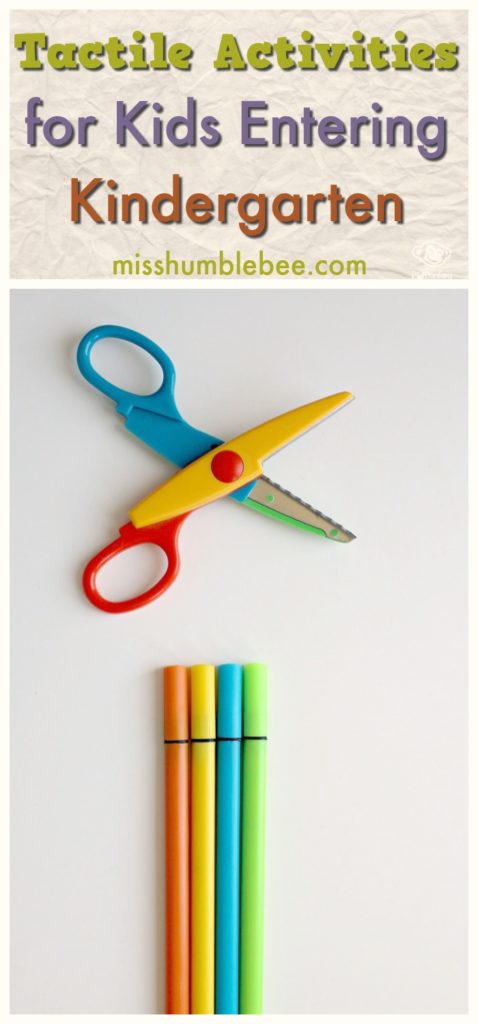When children begin kindergarten, they start spending a lot of their day doing fine motor activities. Each of these skills, from coloring to cutting and everything in between, takes practice and skill to develop.
To help your child transition smoothly, you can help her develop tactile skills at home. A tactile skill is anything that involves the sense of touch, and one of the best ways to develop this kind of skill is to work on things like hand eye coordination and activities that develop fine motor skills.

Below are nine tactile activities for kids who are getting ready to enter kindergarten.
1. Finger painting
Coloring books are less messy, but finger paints let a child express herself in a way that isn’t possible when using crayons.
2. Learning proper pencil grip
Writing is about as basic and essential as it gets for schoolwork and all children should understand how to use a pencil. Make sure that they are gripping it with the right fingers. This will take practice but form is very important. Read this article for three simple and practical tips for teaching this important skill.
3. Dressing Themselves
Children will need to know how to dress themselves and tie their shoes. You can help them learn to do zippers, buttons, and snaps. Although most children don’t enter kindergarten knowing how to tie their shoes, this is a skill they can begin to practice just one step at a time.
4. Using scissors
Children will be using scissors in kindergarten so give them plenty of practice with rounded tip scissors by letting them cut up newspapers or junk mail. You also can use scissors to cut construction paper to make creative art projects.
5. Playing with play dough
Playing with clay or dough is a great way for children to develop their fine motor skills. Sit with your child and make specific shapes by showing him or her ways to roll the clay into balls, pancakes and other interesting shapes. Check out our Ultimate Play Dough Resource List for more ideas.
6. Paper mache
Create a simple project with your child. For example, you may wish to make a globe or set of maracas with paper mache. Show your child how to tear the newspaper into thin strips and how to make the paste from flour and water. Do the first few strips and then let the child do the rest. It is not important to create a work of art on the first try as these activities are about building tactile skills rather than a masterpiece. For full instructions on how to do paper mache, click here.
7. Stringing beads
This may seem simple but it helps children develop skills for using their hands and eyes together. They get to see what they are doing and also feel it with their hands, pairing the two senses together.
8. Shuffling cards
Show your child how to shuffle and deal playing cards. This can take some time to master, so start with a few cards and do not press for immediate results or perfection. Show the child how the cards flip and stack neatly on top of each other and try making several little piles on the table, then turn them into larger piles.
9. Putting puzzles together
If your child enjoys jigsaw puzzles, now is the time to introduce more complex puzzles with more pieces. You may need to spend time helping with this increased challenge, but this provides you with the opportunity to spend quality time that does not involve televisions or computers.










